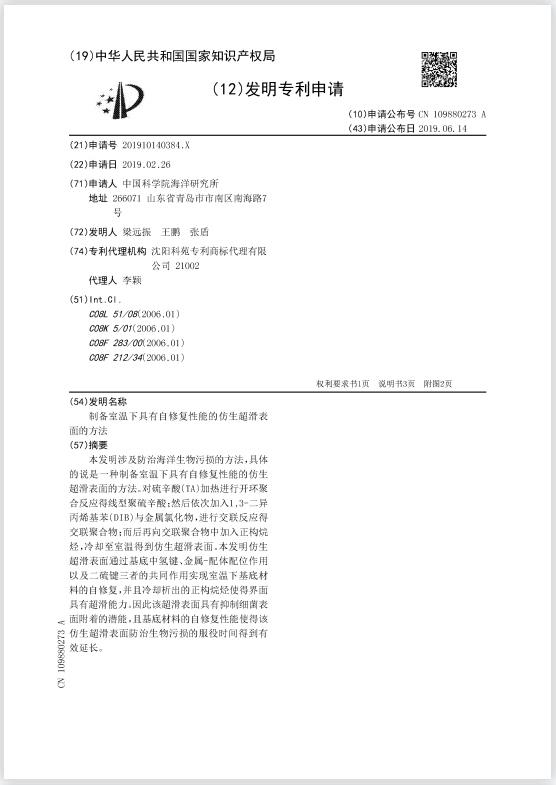本发明涉及防治海洋生物污损的方法,具体的说是一种制备室温下具有自修复性能的仿生超滑表面的方法。对硫辛酸(TA)加热进行开环聚合反应得线型聚硫辛酸;然后依次加入1,3‑二异丙烯基苯(DIB)与金属氯化物,进行交联反应得交联聚合物;而后再向交联聚合物中加入正构烷烃,冷却至室温得到仿生超滑表面。本发明仿生超滑表面通过基底中氢键、金属‑配体配位作用以及二硫键三者的共同作用实现室温下基底材料的自修复,并且冷却析出的正构烷烃使得界面具有超滑能力。因此该超滑表面具有抑制细菌表面附着的潜能,且基底材料的自修复性能使得该仿生超滑表面防治生物污损的服役时间得到有效延长。
The invention relates to a method used for preventing and treating marine organism fouling, and more specifically relates to a method used for preparing a bionic ultra-smooth surface with self repairing performance at room temperature. The method comprises following steps: thioctic acid (TA) is heated for ring-opening polymerisation reaction so as to obtain linear poly thioctic acid; 1,3-diisopropenylbenzene (DIB) and a metal chloride are added successively for crosslinking reaction so as to obtain a crosslinked polymer; n-alkanes are added into the crosslinked polymer, and cooling to room temperature is carried out so as to obtain the bionic ultra-smooth surface. According to the bionic ultra-smooth surface, substrate material self repairing is realized at room temperature through the co-effect of hydrogen bonds, metal-ligand coordination effect, and disulfide bonds in a substrate, and cold precipitated n-alkanes are capable of providing an interface with ultra-smooth capacity; the ultra-smooth surface possesses potential capacity in inhibition bacteria adhesion on the surface; and the self repairing function of the substrate is capable of prolonging service life of the bionic ultra-smooth surface in prevention of biological fouling.
